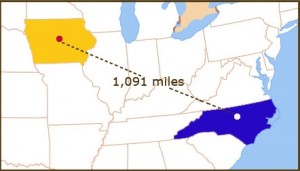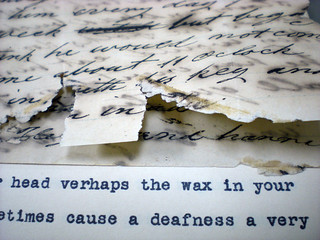 Welcome to this month’s 1091 Project wherein Parks Library Preservation and Preservation Underground talk about how we collaborate with our respective digitization programs.
Welcome to this month’s 1091 Project wherein Parks Library Preservation and Preservation Underground talk about how we collaborate with our respective digitization programs.
Where Digitization Happens
At Duke Libraries digitization happens in three departments:
- Winston Atkins, head of the Preservation Department, advises on and coordinates preservation reformatting projects for both born digital collections and analog materials (especially non-print materials such as moving image).
- The staff in the Digital Production Center (DPC) is part of the Digital Scholarship and Production Services Department headed by Liz Milewicz. DPC digitizes print, manuscript and A/V materials for both library-driven projects and individual patron requests. They use a variety of imaging hardware in their workflow, choosing the appropriate one based on the size, condition and type of material they are imaging.
- Internet Archive has one operator and overhead-scanning equipment on site to digitize print materials from special collections.
Conservation Services works to some extent with all three of these workflows to be sure our materials are safe and in good condition for imaging.

Project Evaluation Prior To Imaging
We review projects under consideration for digitization to be sure the materials are stable enough for reformatting. We meet with DPC and library staff to look at the collection (or a representational portion of it if it is very large) to determine what kind of materials they are, what their condition is, and what treatment may be needed prior to digitization.
Treatment Before And After Imaging
Our main concern is that damaged materials are stabilized prior to reformatting so they can be handled without further deterioration. The most common problems that we treat before imaging include:
- page tears or losses
- mis-folds or detached pieces of fold-outs
- loose or detached pages
- old repairs (if they obscure text)
- uncut pages
- old Mylar encapsulations sealed with tape
We don’t normally fix binding problems such as loose or missing spines or boards until after imaging if the book can be handled carefully as is. But if we feel a book should be repaired first, we will consult with the librarians and decide on a treatment plan prior to sending it to DPC.
After imaging we will do any repairs or put those items into our repair request database to do at a later date. We will also provide a custom enclosure for anything that is fragile or needs protection, just as we would for any other treatment in the lab.

An example of a pre-imaging workflow is the ongoing broadside project. Decades ago it was standard practice to tape the edges of the broadsides to protect them from tearing (we obviously don’t do that anymore). Over the years, the adhesive has made the paper very brittle, yet it is still sticky. DPC cannot image through Mylar so the old, double-stick tape encapsulations must be removed. Because of time and resource limitations we do not remove the old tape, but we do repair any heavily damaged broadsides with paste and Japanese tissue so that they are in one piece and readable. When DPC is finished with them, we re-encapsulate the taped broadsides with our ultrasonic welder so that they do not stick to other broadsides in the folder (no more tape!).
Collaboration During Imaging
The Internet Archive is scanning an incredible number of items every day. The most often requested repairs for this workflow is cutting pages that were never cut by the publisher, or reattaching a loose page. We try to turn these around quickly to keep this workflow moving, especially if it is a patron request.
Sometimes a page or fold-out will get torn or come loose during scanning or a book is discovered to have uncut pages. DPC will bring it next door and we will quickly turn these repairs around so we don’t hold up their workflow.

Sometimes the materials themselves pose a handling challenge and we will help physically handle the books or manuscripts during imaging. Digitizing the Ethiopic scrolls is a good example of this sort of collaboration. Because these vellum scrolls were so long they could not be imaged in one shot, and they were so tightly wound that they would roll up on their own if not weighted down.We had to devise a method to hold sections of the scrolls open while also allowing us to unroll and re-roll as we digitized.
Training
As you can imagine there is a huge volume of materials being imaged every day here in the basement of the library. Because there is so much going through DPC and Internet Archive, we simply cannot review every binding or manuscript page prior to imaging. We work very closely with the staff to be sure that they know what sort of damage to look for, how to handle fragile materials, and when to ask for assistance. We want them to feel that they have the information they need to safely handle materials, and in turn we trust their judgment to know when they should come next door to see us. I think we have a really good working relationship in this way.
Please visit Parks Library Preservation to see how they collaborate with digital projects.


One thought on “1091 Project: Digitization and Conservation”
Comments are closed.